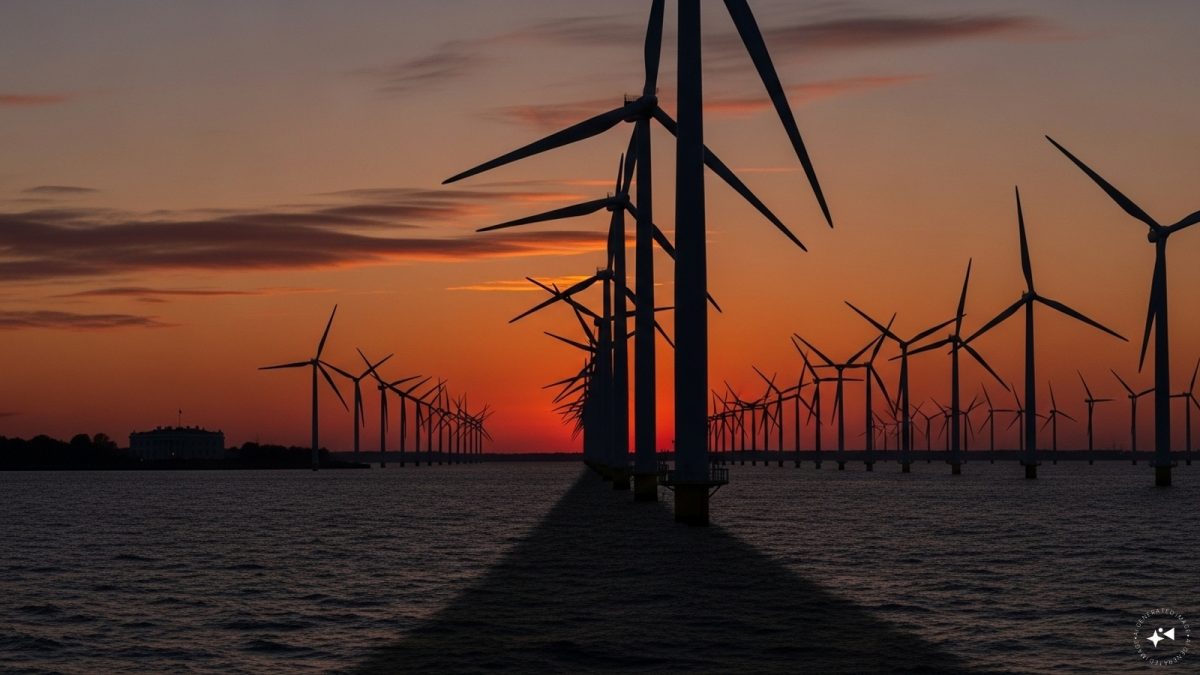The Trump administration has launched an aggressive, governmentwide campaign against the offshore wind sector, pulling multiple agencies into a coordinated effort to slow or block projects that the president has long derided as “ugly, expensive and inefficient.”
According to media reports, White House Chief of Staff Susie Wiles and senior adviser Stephen Miller are spearheading the push which has extended beyond energy regulators to departments with little traditional involvement in wind power.
At the Department of Health and Human Services, officials are examining whether turbines emit harmful electromagnetic fields, while the Pentagon is reviewing potential national security risks. Defence Secretary Pete Hegseth has cited concerns that offshore arrays could distort radar and provide cover for undersea drones.
“People with bad ulterior motives to the United States could launch a swarm drone attack through a wind farm,” Interior Secretary Doug Burgum said last week, defending the abrupt halt of construction at Revolution Wind, a $4 billion Rhode Island project that was 80 percent complete.
Health and Human Services Secretary Robert F. Kennedy Jr. confirmed that his department is working alongside Burgum, Commerce Secretary Howard Lutnick, Energy Secretary Chris Wright and Hegseth as part of a “coalition team” studying offshore wind’s risks. “We’re all working together on this issue,” he told reporters.
Transportation Secretary Sean Duffy has already revoked $679 million in federal funding for marine terminals and port upgrades designed to support wind projects, dismissing them as “wasteful wind projects.”
Impact Shorts
More ShortsThe White House said the moves follow Trump’s January executive order requiring agencies to review whether federal policies unfairly favour wind power over coal, natural gas and nuclear energy. “Agencies are implementing that Executive Order,” spokeswoman Anna Kelly said in a statement.
The administration has also directly intervened in several high-profile projects. Construction was frozen in April at Empire Wind, a $5 billion New York development, before being allowed to resume after negotiations with Governor Kathy Hochul. More recently, approvals for the Maryland Offshore Wind Project, South-Coast Wind in Massachusetts, and New England Wind near Martha’s Vineyard have all been placed under review.
The crackdown has stunned the renewable energy sector, especially after last month’s shutdown of Revolution Wind. Industry experts note that offshore wind projects already undergo extensive review by the Defence Department, which signed off on Revolution Wind’s radar impact in 2023.
Critics argue that many of the administration’s claims including Kennedy’s warning about undersea cables harming whales and people are unsubstantiated. Studies by federal agencies have found no significant health or environmental impacts from such cables.
The political backdrop is clear: Trump has opposed wind power since fighting a Scottish wind farm near one of his golf courses more than a decade ago. On the campaign trail, he pledged to roll back green energy in favour of fossil fuels, a promise that has won support from oil and gas executives.
But Democratic governors in the Northeast are warning of wider fallout. Leaders from Connecticut, Massachusetts, New Jersey, New York and Rhode Island said revoking permits for already approved projects could shake investor confidence. “The U.S. markets operate on certainty,” they wrote in a joint letter. “Cancelling projects that have already been fully permitted sends the worrisome message that the work can be stopped on a whim.”
For now, the fate of America’s biggest offshore wind farms hangs in the balance as the administration doubles down on a fight that pits its scepticism of renewables against billions of dollars in investment and years of planning.


)

)
)
)
)
)
)
)
)



